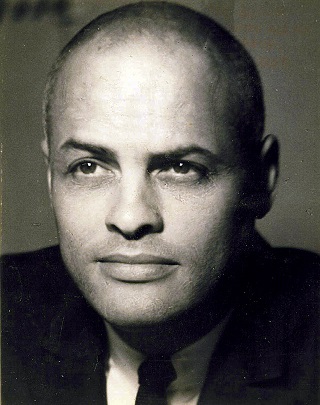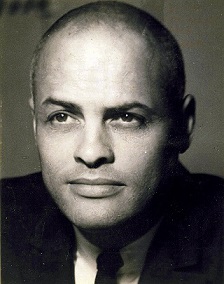

In 1945, before Jackie Robinson played Major League baseball, or Marian Anderson sang at the Metropolitan Opera, Georg Olden, the grandson of a slave, took a job with CBS. There, as head of the network’s division of on-air promotions at the dawn of television, Olden pioneered the field of broadcast graphics.
Working under CBS’s art director, William Golden, he supervised the identities of programs such as I Love Lucy, Lassie and Gunsmoke; helped produce the vote-tallying scoreboard for the first televised presidential election returns (the 1952 race between Dwight D. Eisenhower and Adlai E. Stevenson); and collaborated with esteemed artists and designers, including David Stone Martin, Ed Benguiat, Alex Steinweiss and Bob Gill.
Olden was widely celebrated in his day. The 1981 reference book 250 Years of Afro-American Art: An Annotated Bibliography notes that between 1951 and 1960—the year Olden left CBS to work in advertising—his name appeared 108 times in Graphis and Art Directors Club annuals. By 1970 he had won seven Clio awards and had even designed the Clio statuette in 1962, a figure inspired by Brancusi’s Bird in Space sculpture.
By all accounts, Olden was endowed with many graces. Nina Blanchard, the writer of a 1965 Elegant magazine profile, observed that he was “awesomely handsome, extremely male, and very polite, all of which can be momentarily unsettling for a woman attempting to conduct a serious interview.”
Olden appeared to have settled on the unusual spelling of his first name when he was in his early twenties and occasionally sold cartoons to The New Yorker. “You have to do something to attract the attention of the magazine editors,” he later told Advertising Age in 1963.
He was born George Elliott Olden in Birmingham, Alabama, on November 13, 1920, the son of a Baptist minister whose own father had escaped slavery and fought in a black regiment of the Union Army during the Civil War. Olden’s mother, a New Orleans beauty from whom he apparently inherited his much admired looks, was a classically trained singer.
Olden attended Dunbar High School in D.C. and nearby Virginia State College before dropping out shortly after Pearl Harbor to work as a graphic designer for the Office of Strategic Services, forerunner of the CIA. When the war ended in 1945, his OSS supervisor recommended him to the agency’s communications director, Colonel Lawrence W. Lowman, who in civilian life was vice president of CBS’s TV division. From a one-man operation involved with six programs a week, Olden eventually headed a staff of 14 in charge of 60 weekly shows. When he joined the network in 1945, there were 16,000 TV sets in the entire U.S. By the time he left in 1960, there were 85 million sets, one for every two Americans.
In 1963, he joined an elite department within the ad agency McCann-Erickson. That year, he became the first African American to design a postage stamp—a broken chain commemorating the 100th anniversary of the Emancipation Proclamation. At a White House ceremony with Olden in attendance, President John F. Kennedy praised the stamp as “a reminder of the extraordinary actions in the past as well as the business of the future.”
Georg Olden helped to ensure that future by inspiring other designers of color. Lowell Thompson, Michele Y. Washington and Frank Briggs are contemporary practitioners who have each claimed him as an inspiration and worked to bring his contributions to light. So it is infinitely regrettable that he soon parted company with the industries within which he blazed such notable trails.
Olden died in Los Angeles in 1975, at the age of 54. In a posthumous edition of Who’s Who, he supplied his own unconscious epitaph: “As the first black American to achieve an executive position with a major corporation, my goal was the same as that of Jackie Robinson in baseball: to achieve maximum respect and recognition by my peers, the industry and the public, thereby hopefully expanding acceptance of, and opportunities for, future black Americans in business.”
